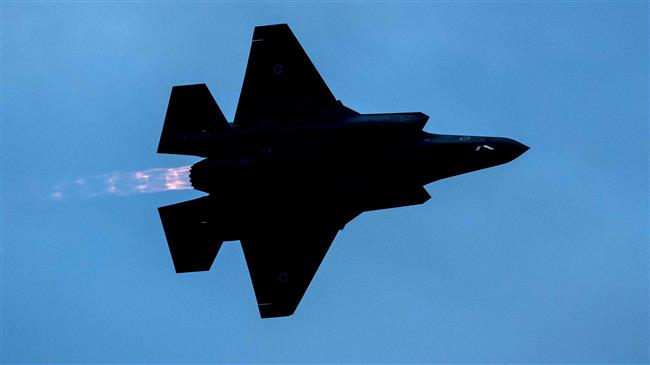Israel grounds F-35 stealth fighter jets over possible fault
Israel says it has grounded all of its F-35 stealth fighter jets after the aircraft’s engine fuel tubes were suspected to be the cause of a September crash in the US in which the jet was completely destroyed.
The Israeli military’s spokesperson announced on Thursday that the decision had been made as an “extra precaution” as the regime does not have the model that crashed in the US.
The spokesperson said all the planes in the Israeli fleet will be tested even though no failure has been reported. “The test will take several days. After all checks are complete, the planes will return to full operation.”
The announcement came shortly after a similar decision by the US Defense Department, which said it had grounded its entire fleet of F-35 joint strike fighters.
“The US Services and international partners have temporarily suspended F-35 flight operations while the enterprise conducts a fleet-wide inspection of a fuel tube within the engine on all F-35 aircraft,” the F-35 Joint Program Office said.
“If suspect fuel tubes are installed, the part will be removed and replaced. If known good fuel tubes are already installed, then those aircraft will be returned to flight status,” it added.
The Israeli military’s decision was made a few days after US President Donald Trump decided to provide Israel with more F-35 stealth fighter jets.
Read more:
Trump’s move was a reaction to Russia’s delivery of four S-300 air defense systems to Syria following an incident in which a Russian plane was shot down.
Moscow blamed the downing of its Il-20 reconnaissance aircraft on Tel Aviv.
Moscow said its data proved that an Israeli F-16 fighter jet had been trying to use the Russian aircraft as a shield when it was shot down by Syrian air defense forces.
The F-35 stealth fighter, the world’s most costly military project ever, has been controversial from the outset for all its claimed technical sophistication.
The US military's "fifth-generation fighter" has been dogged by a raft of technical problems, including software delays, fuel tank redesign, lightning protection and helmet display issues, and flight control problems.
According to a Pentagon report, numerous components of the aircraft are unreliable and require maintenance more frequently than desired.
Religious coexistence in Iran
Italy arrests Palestinian activist amid crackdown on anti-Israel voices
VIDEO | Myanmar's capital goes to polls amid civil war, humanitarian crisis
Israeli forces invade Syrian village amid continued aggression
UN experts warn Palestine Action hunger strikers at risk of death
Putin: Russia will use force to achieve goals if Ukraine stalls peace negotiations
The Year That Was: Best of ‘Iran First’ in 2025, the year of major Iranian breakthroughs
German journalist says Israeli forces raped her after abducting her from Gaza flotilla











 This makes it easy to access the Press TV website
This makes it easy to access the Press TV website